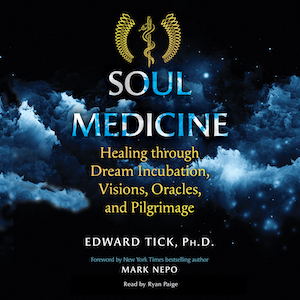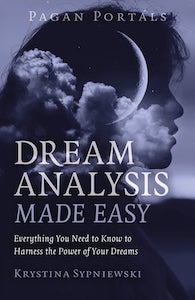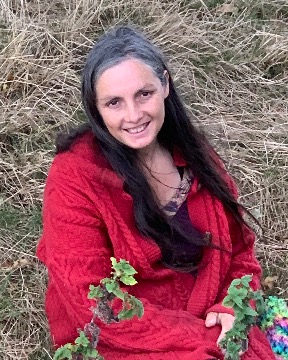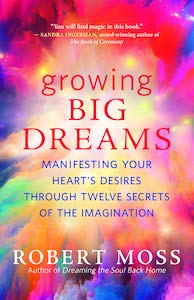
Your Dream Handbook: Unlock the Meaning of Your Dreams to Change Your Life, by Marc J. Gian
CICO Books, 9781800653399, 144 pages, June 2024
Author Marc. J. Gian shares his “dream toolbox” with readers in his book entitled Your Dream Handbook: Unlock the Meaning of Your Dreams to Change Your Life. I love that he is offering to support us as we “prepare for dreaming, remember dreams more easily, use a dream journal, and unlock your dream images to change your waking hours for the better.”1 What draws me to this book is the opportunity to learn about my recurring dreams and transform this information into guidance for my life.
Gian is a massage therapist, licensed acupuncturist and teacher, who has been in practice for more than 25 years. He works with clients in Manhattan and Brooklyn, utilizing massage, acupuncture, essential oils, Chinese medicine, and hypnosis. He also teaches classes on dreams and aromatherapy at the New York Open Center and other venues. For more information about Gian, check out his website.
Gian breaks the book into five chapters:
- “Foundations for working with night dreams”
- “Your dream toolbox: Getting ready to dream”
- “Waking from the dream and mining the diamond”
- “Challenging dreams”
- “Waking life as a dream”
On the first page of each chapter, he also shares section titles and the respective page numbers for the information he will cover. At the bottom of the left-hand page Gian features the chapter title and on the right-hand page he lists the section title. This is so helpful!!!
In his brief introduction, Gian shares:
“This book is about using your dreams to achieve self-mastery and walk the path of truth. It outlines the integrated mental tools in specific mind body principles that are needed to immerse yourself in the pictorial language of dreams.”2
Gian provides lots of exercises for the dreamer, including many meditations for dreamwork. Gian covers common themes, as well as therapeutic steps you can take to read a dream or change a dream. For example, he shares how to write down your dream, ask three basic questions and then follow up with more questions regarding the elements in the dream. He also shares how important it is to work with just a “blip”3 of a dream and not discount its importance.
It is important to note that Gian cautions against analyzing dreams:
“Throughout this book I have been careful not to use the word “analyze.” Dreams are real and happen of their own accord. When we dream, we are not analyzing waking life. When we wake and read the dream receptively, we are not analyzing the dream, we are seeing analogies in waking life.”4
My favorite section is the one on nightmares. Gian provides a thorough explanation of nightmares and explains that these usually come “in order to alert you.”5 He also talks about night terrors and the difference between the two. Did you know that it is totally possible to transform our nightmares? I particularly love Gian’s wisdom on this:
“In order to disown something, first you need to own it, instead of stuffing it down…. Once you have discovered the meaning of the dream, corrected it, and created a new blueprint, it is likely the feelings associated with the dream will no longer be present.”6
I really enjoyed the list of numbers and potential meanings. For example, twelve may mean “wisdom or discernment”7, while nineteen may represent “grace”8. I also enjoyed the list of colors and their meanings, such as pale blue representing “detachment”, or “shiny black” referencing “rebirth, life, transcendence.”9
In addition to dreams and dreaming, Gian also shares exercise or meditations that can help in our waking life, such as one that can help you to reframe your day. With his six-step process, you can “examine your entire day in reverse” and prevent stuffing emotions and allow yourself to release “feelings of frustration, anger and resentment.”10 I’ve recorded this meditation to use later this week to let go of a busy or problematic day.
The book is accented by beautiful, four-color art that captures dream images, as well as aspects of daily life. Gain also peppers the prose with quotes from mentors and spiritual masters. At the end of the book, he includes four pages on the different types of dreams, an eight-page dream journal, a three-page index and a short list for additional reading on dreams and spirituality. Although I don’t like to write in my books, I can see myself copying the colorful journal pages and using them for my own dream work.
The book features a heavy, card-stock cover with fold-over pieces, so that you can mark your reading progress in the book. Gian’s prose is easy to read, easy to navigate and easy to retrace for information you want to review. I can tell that Gian carefully planned out the structure and layout of this book with the reader in mind.
Your Dream Handbook will be great for anyone who is interested in learning more about their dreams and how the information can add meaning to their waking life. It will make a nice gift for anyone from a high school or college graduate to an adult who is searching for answers to the dreams that sometimes keep us up at night. I plan to recommend this book to clients and friends alike.

PJ Spur is an author, intuitive, spiritual mentor, astrologer, and hypnotist. She does tarot & oracle card readings, natal chart readings, grief coaching, and relationship healing. She also has hosted a weekly “Coffee & Cards” event with her Soul Compass Community for the past four years. Her book Navigating Grief with Grace is available on Amazon. Learn more at www.dearpj.com














